It seems to me that these days the Great American Car is in fact the pickup. A bit contradictory, but such is the nature of life. The only American vehicles I see around here are Ram, Ford and Chevy pickups and the occasional Mustang or Chrysler 300. Oh, and an even-more occasional Tesla; I keep forgetting about them – electrics are still something of a curiosity in small-town Australia.
Anyway, we looked at some pickups last year, but only managed to get as far as 1956. Today we’ll start off from there and see how far we get. Back then I told the story of going with Dad to the fruit and vegetable market in the early mornings, while he talked business with the growers, and the impact seeing all those farm trucks had on me. I don’t go out of my way to build pickups, but some of those positively begged to be built.
Like this one. These F100s were everywhere. Nowadays it seems amazing that they tore up the cab to include the wraparound screen for only one year. Now I understand a lot more of what was involved: new cowl and dash, doors, roof, windshield, vent windows… The idea of an annual model change just seems alien to Australians, and certainly a change on this scale. Ford evidently thought it was worthwhile, and they sure seemed popular in the years that followed.
Chevy trucks of this generation seemed to be fairly uncommon here. True, Holden was flat out building enough Holdens, and the economy was not what it had been for farmers, but maybe the styling was a bit too outlandish for conservative Aussies? Just a guess. And I’m sure they would never have sent us the Cameo; stylish fibreglass panels with no more room than a stepside? While I like the looks, I couldn’t see farmers here paying a higher price for less practicality.
I don’t think I ever saw one of this generation on the road. But as a kid I had a book with a picture of one of these in it. The styling just looked so outrageous that I never forgot it. When AMT came out with the kit in ’98, it was a must-build.
Hmm….
So I built several. You’ve seen one before, the ‘Gippsland and Northern’ truck. Here are the rest. This sort of thing happens sometimes.
Fast forward to 1964 and we would find the same basic cab but with a normal windshield. Funny how we can look back on some things and wonder why they were ever fashionable. Revell does the ’64 and ‘65, but I don’t have a decent photo of my ‘64.
Now, a problem with writing these articles is the gaps. Subjects for which either no models exist, or none that I have built. For example, I’d love an International of any era, but no. None available. I’ve mentioned the lack of Dodges (we’ll fix that later, Mopar fans), and until the last few years there were no ’57-60 or ’61-’66 Fords. Or indeed the ’67-72s. AMT has released a ’60 (but I don’t have one), a ’63 (which I have, but not yet built). Moebius, a relatively new company, has some fantastic ’65-66s though.
This F100 has a service bed, for a bit of variety. Naturally it just begged for a bit of weathering. I mean, it’s so obviously a work truck…
One year newer, with two-tone paint. Factory fresh.
Some serious FE power – or in this setting should that be FT?
I’ve considered building Paul’s CC truck; the bed is no problem and I could de-trim the cab. I could source the six from another kit, but I’m not sure the overdrive tranny is available anywhere, and it would hardly be Paul’s truck without it.
Moving forward a generation we have the bumpsides, again from Moebius. I think I’ve counted up twelve variations of this kit. Every year, with some combination of short wheelbase or long, smoothside or stepside, 2WD or 4WD, a ramp truck for race cars, a tow truck for dead cars, and even a Mercury truck for the Canadians. You get the impression someone at the Moebius company is a real fan of this generation.
Here’s a ’69 built as a dealership part-chaser, with shortbed and a six.
And here’s a longbed ‘71 at work. That little Austin A30 wouldn’t be much of a load.
Back to ‘brand C’ with this ’72 Chev. This would have been an annual kit, and left in ’72 form rather than backdating it to the earlier years. Nothing wrong with that.
Chevy and GMC. Longbed and short. Smoothside and stepside. You could mix and match. People do, and have.
With the seventies came that trucking craze, and this generation lent itself to some seriously weird models…
Big-rig front on a Chevy towtruck. Hmm…
Make of this what you will! “Rolling Thunder” is an old MPC kit, built straight out of the box about 45 years ago.
AMT did the dentside Fords every year – but in Camper Special form! As far as I know they never included a camper shell, which would seem a natural, but no. Odd. Here’s a ’76 (I think), showing off that odd long wheelbase with short rear overhang combination.
Meanwhile, what about Dodge? At last, Mopar fans! Here’s a ‘78; once again a full width longbed. This would have been an MPC annual kit back in the seventies, updated each year and reissued a few years back. It came with a range of optional parts (even a mini-bike), and nice decals for several businesses (garden care, motorcycle repair), but I built a fairly basic truck. I had this new paint idea, and wanted something large to try it on.
Here’s an earlier incarnation of that MPC kit, this Little Red Express truck. Short wheelbase stepside with Power.
We’ll stop there for now, and carry on another day. It starts to get tricky with pickup-based SUVs, car-based pickups, less-than-standard-size pickups, import pickups, etc. I’ve yet to sort out how I’ll group and handle all of them. Another time!























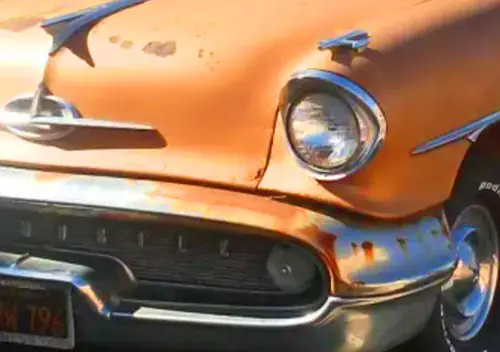
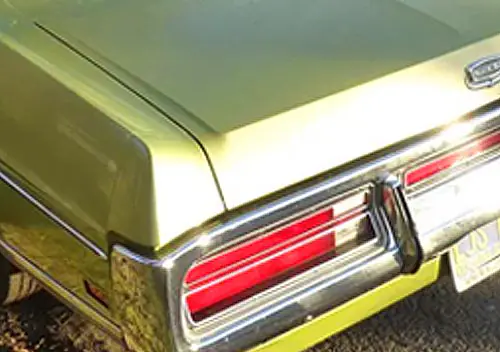
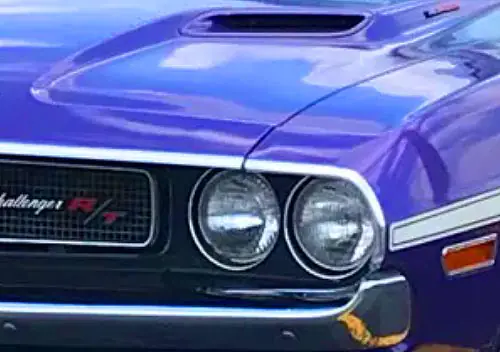


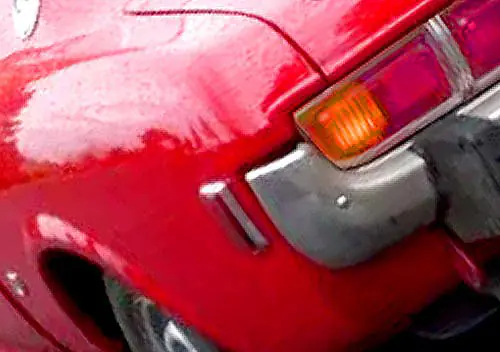

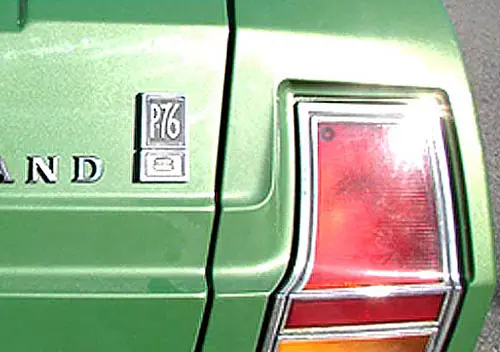
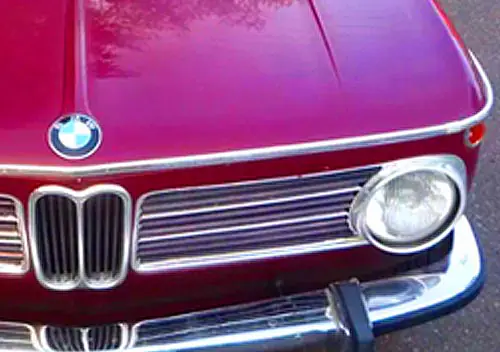

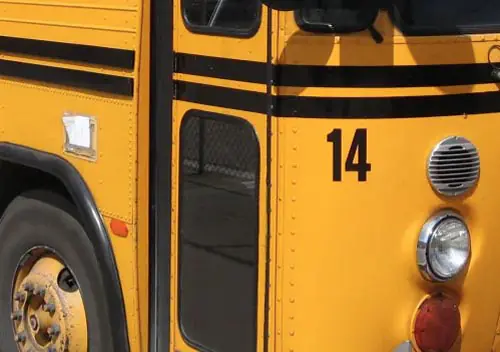
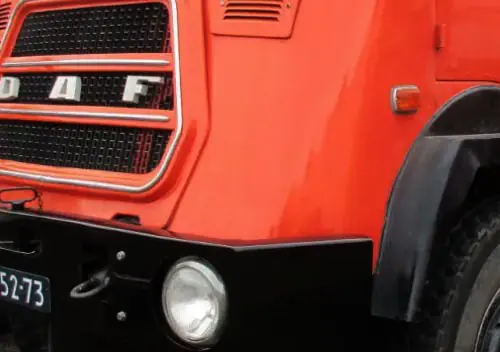
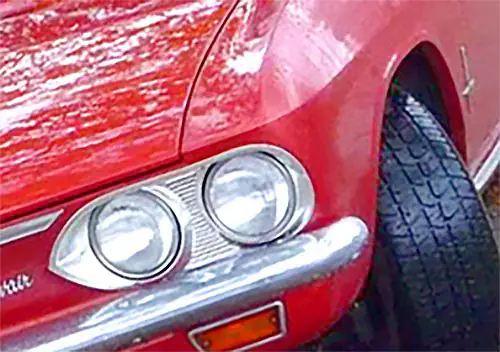
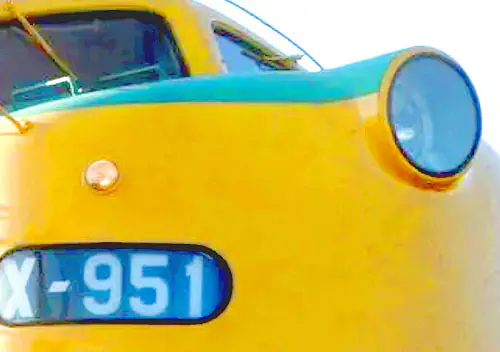
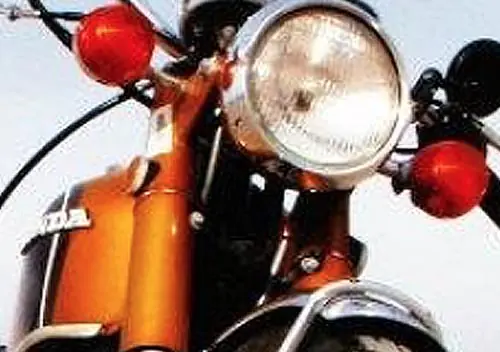
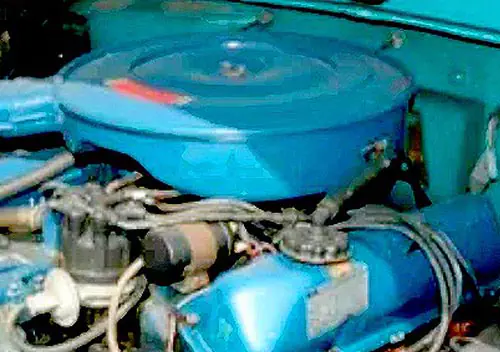
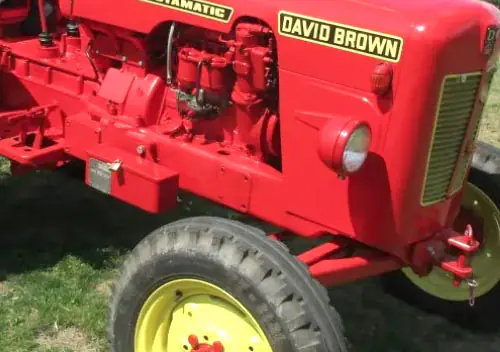
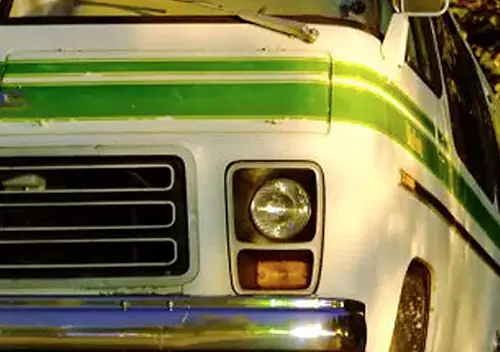

Cool!
These must be fairly large scale – 1:24 I guess? I love the engine detail!
Indeed, Anders. These are 1:25. I had to go back and check which models I showed, as some US companies used 1:24, while others did 1:25. I build both.
I showed V8s, so here’s the Ford six.
Nice trucks! And no, that would not be a FT, those were for medium duty trucks.
Thanks. I wasn’t sure about the nomenclature for that one.
Great builds, you’ve got a helluva collection. Nice job
Thanks Tom.
Amazing work! Really attractive detailing, and customizing, Peter. Love the two tone on the F-100. It looks so natural, and flattering, on this truck.
The slight yellowing of your white paints, to lend a retro feel, is very nice.
As always, fantastic colour choices. The candy apple red on the Dodge pickup, looks terrific. As does the lifted Lil’ Red Express. Thank you for these!
And thank you, Daniel. As always seems to happen, you seem to notice and comment on the things I just do instinctively!
The yellowing of the white, that’s just going from memory. The few older trucks I used to see with a white cab (eg. the ’66 Ford) weren’t the ‘bright’ white we see today. More like an ivory, but not quite. Yet a whiter white seemed ‘right’ for the ’72 Chevy. Maybe this was a subtle reflection of the change of the truck’s status from (dirty) work vehicle to a (more likely to be washed) multi-purpose role? Or maybe I’m overthinking. Again. While we tend to think of white as white (well, maybe you don’t), a trip to the auto parts store will show an amazing variety of whites. I think I have four different spray whites and about as many cans, but I mixed up a special for this truck.
The two-tone F100 was based on some internet research; there was a similar colour scheme offered. While the Moebius kit included a colour chart and listed two-tone options, seeing a photo of an actual truck was the clincher.
Not sure why I painted the longbed Dodge a candy red, but having done so it looked too nice to put the signwriting on. And the Express is just clear over the red plastic; it looked to be the right shade of red – near as I could tell in those pre-internet days.
Thanks!
That cab white so often used by Ford in the middle of the 60s was called Wimbledon White. However, if a painted bumper was used, instead of chrome, it was painted in Colonial White just like the rims.
I thought they looked different, but wasn’t sure if I was imagining things. Thanks!
I too am a light truck lover / owner and think these are all outstanding .
-Nate
Thanks Nate. More to come, eventually.
Nice work, as always! I’ve been spotting a lot of bumpside Fords on the road lately, many still doing real work, so it’s nice to see them here, in scale. I built quite a few 1/25th scale models as a kid in Sixties, mostly AMT, but I’m pretty sure the only pickup I built was the AMT ‘34 Ford. Of course now I’m driving a real pickup, my fourth in over 40 years.
Thanks dman. The bumpsides were quite popular here, compared to the later dentsides, which I think we only got in LWB form. Maybe it was a downturn in the economy, maybe there was a feeling the dentsides had gotten too big/thirsty for regular work, maybe it was just the age I was or where I lived – I don’t know. I just know that down here the later ones were a comparatively rare spot. From reading local magazines I get the impression Ford may have changed their marketing strategy, resulting in the F-series becoming more of a specialty item, and the Falcon ute (very theoretically) taking over the SWB F100’s role.
Fun stuff. Your ’60 C10s are terrific. Make me want to reach out and touch ’em. Thank you for sharing your work, Mr. W.
Ah, thanks. I wasn’t sure about showing three of the one truck. But since you like them so much here’s the one I didn’t include, the Gippsland and Northern truck.
Always happy to share. I really got a surprise when I woke up this morning to so many comments.
Wonderful work. The bumpside Fords hold a special place for me…
Thanks Jason. Yes, there is something special about them; when I think of ‘Ford Truck’, this generation is what comes to mind.
Nice pickup. Funny how this site sometimes randomly twists images – let’s see if I can fix that from my end…
Thank you for correcting that. I was at a remote location. You’ll be seeing more about this F-100 soon.
Based on a comment about the Moebius F-series kits in one of your previous posts, I ordered that same shortbed ’69 with 240 six along with a different kit for a longbed bumpside. I will combine the two to recreate the ’69 F-100 Custom Cab on which I learned to drive, and that I used to teach my two sons to drive as well. It was in the family 42 years.
https://www.curbsideclassic.com/curbside-classics-american/coal-requiem-for-a-truck/
There’s something about that generation of Ford. I have two more to build myself! Having had one in the family for so long, building that kit should feel awfully familiar, Ed. If you have any questions combining those two kits, feel free to ask – though I’ve not tried it, I think it should be fairly straightforward.
I love these! The colors on the 71 Ford are almost a perfect match for a combo I used to see commonly. The paint you mixed up for your 78 Dodge pickup is quite close to an actual 1977-only Mopar color called Russet Sunfire Metallic. My 77 New Yorker was that color, and I loved it.
Thanks JPC. I copied the ’71 from one I saw online, but didn’t know how common it was. We didn’t get the fancy trim two-toned ones down here; I remember the magazines ridiculing XLT trim stuff that came on the dentsides later years. It took a while for the whole ‘fancy truck’ thing to take off here; since then pricing has moved them upmarket to the point where a degree of luxury is expected. And they sell; of the three I see Rams the most commonly here, some with the full-shiny look and others in blackout.
The ’78 Dodge – perhaps I could call it a ’77 then? 🙂 I had no idea it was an actual ’77 colour. It was a happy accident, and it is indeed a beautiful shade.
Excellent models. I really love two-tone paint on pickups. The 1971 Ford (the one pulling the Austin) is terrific!
Thank you Jeff. As I’ve alluded to, the two-tone paint and fancy trim options were not something we saw down here back in the day. It marks these out as distinctively American, or Canadian I guess. Did they sell these loaded pickups in Central or South America too, or did they only get the more basic ones we did?
Yeah, that ’71 is a favourite of mine, and looks great in tow mode. At 1575 pounds, the Ford wouldn’t even know it was there!
Nice trucks! How would anyone know if a model of my truck had O/D or not? Oh, right; you would! 🙂
Paul, I burst out laughing at your comment! While I wouldn’t recognize the O/D trans right now, if I were to build your truck I’d research it. Moebius is good at calling out which engine and gearbox combination is in which kit, but I haven’t noticed them mention the overdrive manual. I gather it’s comparatively rare. For all I know some truck model parts company probably has a cast resin piece available. The scale aftermarket is a huge place.
Peter, nice work as always and as I expect of you. See, once set set some high standards then what else can you do but try to exceed. It’s a trap I can tell you. Before I left my office today someone walked in and wanted to make an appointment as he was sent over. Oh, by who and he said the name and that you were the best in the valley. Oh, great.
Now I am going to lay one on you like the referral person laid on me. Being the attention to detail kind of guy, I know what the expectations are, then where are the spark plug wires for the distributors? Nudge, nudge 😉
Ha! Tbm3fan, I have a friend who also comments on the lack of plug leads, so I’ve heard this before. 🙂 I take your point though.
But it opens a can of worms: where do you stop? Battery cables come to mind next; they’re not too hard. But what do you notice next? You have fuel lines. Accelerator linkage. Brake lines. Other underhood wiring. Maybe vacuum lines. A removable dipstick (with correct oil level)? Been done (not by me). Some guys aim to replicate every underhood wire and bracket, even down to correct gauge wiring for the alternator – not naming names, but I can think of a couple of builders who really excel at this.
While I have on occasion wired an engine, I’d rather rely on brushed detail on 3D structures to suggest what isn’t there. Call it personal choice, call it playing to my strengths, or whatever. I enjoy painting; I don’t enjoy wiring.
That’s some great work. It always makes me smile when I see one of your posts. Back when I was 11 or 12 or so, I built the ’73 pickup kit (actually a ’71 or 72 with a different grille, but you know). My approach was a bit different than yours, however! I wanted the truck to look like a partly-repaired wreck. Most of the truck was turquoise and white but the front fenders were primer gray, and I left off the front bumper. I think I also had mismatched wheels and tires, but this was over 50 years ago, so I might be “misremembering.”
Hey, thanks Mike! I’ve done a few other trucks that fit this time frame, but none like the one you describe. While I have seen models built in that style, it’s not something I’ve tried – yet. You can have fun with this sort of build.
One memorable one I saw in a magazine back in the eighties was a then-new Mustang convertible, built to look like it was in a wrecking yard – mismatched panels, missing trim, rust holes, torn roof, ID lettering on some panels. Bit of a shock to see a brand-new car built as a junker!
You should try to do Paul’s ‘66 Ford Pickup.
While the OD transmission my give you a problem, the challenge would be to put this website on the door…
…but then again, you’ve got mad skills, Peter. 😀
Not so much of a problem as you might think, Rick. Years ago I made some buildings for my son’s HO railroad layout, and I photoreduced a Wanted poster from a historic theme park and put it in the window of a small village shop. It’s basically a matter of successively scanning and reducing until you get it the size you want. Then once it’s the right size I could print it out on decal paper. I used that technique to put the plates from my old car on the Cressida, though the optics on my current printer weren’t really up to the task.
Peter, your work is amazing, every model is a beautiful work of art. So much so I was inspired to look at some offerings at our local craft mega store –only to get sticker shock. If had your level of skill and patience, perhaps I would fork over the $45US, but for now I’ll stay with the full size stuff…
Thanks Cang. As I’ve alluded to before, it takes time and practice to work up the skill set. When I started doing these, a kit was like $2.50. I rarely buy new kits now because of that price – your $45US translates to about $80AUD on the shelves here. You would have the advantage of starting with the patience that comes from maturity, but you still need to get a feel for the materials, how to control your tools, and such -as with any new hobby or craft. Then you start noticing details that you missed before – shadows, proportions…
If you can work on the full-size stuff, more power to you!
Another colourful and interesting selection, Peter, you really do a fine job. Good point about detailing; best to know where to stop and maintain a degree of consistency.
Thanks Bernard. A lot comes down to knowing my own strengths and limitations. Of course I do try to push the envelope a bit, and get things wrong sometimes. Some models have just bypassed the photo stage and gone straight into storage. I have about a dozen long-unfinished projects as testimony to that, but each has probably taught me a lesson. ‘Failure’ is not negative if we can learn something from it. 🙂